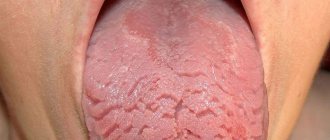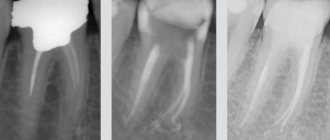The division of the tongue (snake, forked tongue) is called splitting (from the English split - “to separate”). This is an extreme type of body modification, which involves surgically dividing the organ into two parts along the midline, from tip to middle. The purpose of this procedure is self-expression, emphasizing one’s own individuality. Some people resort to this type of body fashion to match fashion and youth trends. Another meaning of splitting is to increase sensuality and expand opportunities in intimate relationships. Kissing and caresses with a forked tongue evoke more vivid sensual sensations in your partner. Most people who decide to split can control the two halves of the tongue separately using muscles.
Features and Precautions
Split tongue is a more complex type of body modification than puncture (piercing). It requires the participation of a qualified performer, preferably with medical, and even better, surgical education. It is not recommended to perform the manipulation at home or in “handicraft” conditions; this task should also not be entrusted to a first-year medical student. To avoid complications, sterile conditions, special drugs (anaesthetics, hemostatic agents) and professional surgical instruments are required. At home, these requirements are difficult to meet.
Before undergoing the splitting procedure, it is necessary to study the contraindications. They are as follows:
- Allergy to anesthetics is very dangerous, because... During the operation, anaphylactic shock and Quincke's edema may develop (an increase in the volume of the larynx and, as a result, the inability to breathe);
- problems with blood clotting, a tendency to bleed, taking anticoagulants (even simple aspirin) can lead to blood loss and require more complex manipulations;
- high temperature, fever and other acute conditions are a general contraindication to any interventions, including surgical division of an organ;
- Oncological diseases are also a general absolute contraindication.
Complications and health consequences should also be kept in mind. If the procedure is performed by an unqualified doctor, this can lead to unfavorable developments:
- infection and tissue necrosis;
- nerve damage.
While the infection is a reversible process that can be stopped with antibiotics, damage to the nerves responsible for sensation and movement is difficult to reverse. This will require more complex and expensive surgery, but a positive outcome is not guaranteed.
When the halves heal, the person still expects specific consequences:
- poor diction (usually it becomes more difficult for a person to pronounce the sounds D, T, R and other fricatives);
- increased hissing and whistling sounds;
- spitting saliva while speaking.
If the procedure is performed professionally, then the taste of food does not change during bifurcation.
Postoperative period
It is not characterized by too complex restrictions or deprivations. The main thing is to prevent infection. To do this, you need to wash the seams with chlorhexidine. To avoid tongue fusion, you will have to wear a tampon with a special medicine. Drinking alcohol, smoking and eating a lot is prohibited.
If you do everything exactly as the specialist recommended, then in a week you can begin to return to normal life.
How is splitting done?
Division into two halves is a surgical operation, it is performed under local anesthesia using a scalpel. Technically, this is a simple operation, although the preparation for the operation and the method of making the incision depend on the experience and chosen technique of the specialist. The standard bifurcation steps are:
- Before surgery, the patient is recommended to brush his teeth and remove white plaque with a brush, then rinse his mouth with an antiseptic solution;
- the doctor injects an anesthetic directly into the tongue;
- With a special surgical instrument, the master clamps the tongue in the middle and leaves the clamp for 30-45 minutes to stop the blood supply at the incision site;
- Using a sterile scalpel, the doctor cuts the tongue into two parts;
- A piece of gauze with an antiseptic is placed between the halves of the fabric.
This algorithm may vary depending on the skill and experience of the performer. Applying a clamp helps keep blood loss to a minimum. Other specialists, in addition to the incision, sutured the two halves to stop bleeding and reduce the risk of tissue infection.
In rare cases, splitting can be performed with a laser, but for this you need to find a specialized medical institution that provides this type of service. In practice, it is very difficult to find, so in most cases, bifurcation is performed surgically.
Cons of the operation
No matter how beautiful everything sounds, there are still disadvantages to this operation. And there are many of them.
- Blood loss . If the cutting process is unsuccessful and an artery is hit, the person may lose a lot of blood, which can even lead to death.
- Painful sensations. Although the operation is performed under anesthesia, the effect of the painkiller soon wears off. The tongue swells and hurts for a long time.
- Inconveniences in everyday life . Split prevents a person from talking at first. Speech becomes whistling and lisping, and some letters cannot be pronounced at all. The man begins to speak slowly. You will literally have to learn to talk all over again. This will greatly interfere with work or study, but over time, speech will be restored. You can only take liquid food so that nothing gets into the wound. Drinking alcohol and smoking are also prohibited for a long time.
- Long healing . The incision takes about a month to heal and requires constant care. Frequent rinsing and changing tampons make life a little more difficult.
- Repeat the operation . There are cases of split fusion by a few centimeters, but not completely. In this case, you will have to contact the specialist again to correct the cut.
- Infections . During the operation, it is possible that an infection may be introduced into the wound by an unscrupulous technician. Or, if the split is not properly cared for, a person develops inflammatory processes, suppuration and other unpleasant consequences that require treatment.
- Damage . An inexperienced technician can damage the tonsils or nerve endings in the client’s mouth.
- Non-acceptance by society . Not everyone will accept such a modification from another person. This may cause some conflicts and misunderstandings on the part of relatives and superiors.
- The order is not executed nicely. The client may remain dissatisfied with the result if the specialist did not fulfill his specific request (for example, the cut was not the right length) or made the cut crooked.
- Price . A split is more expensive than a regular piercing. This is logical, because the operation is quite serious. On average, the cost of the service ranges from 5,000 to 10,000 rubles. Do not forget about possible correction, which is also not free.
Care, healing time and possible complications
The most difficult period after cutting is the first few days. At this time, a natural reaction of the body is observed - inflammation and swelling. The tongue will hurt and increase in size, making it impossible to speak and eat normally. Within 1-3 days, body temperature may increase - this is a normal phenomenon that can be controlled with antipyretic or anti-inflammatory drugs.
During the first week after the incision, you will have to eat pureed or liquid food. Sour, salty foods (marinades, sauces, tomato juice), spices and other foods that cause irritation will have to be excluded from the diet. After each meal, you should rinse your mouth with an antiseptic solution without alcohol.
To ensure healing occurs faster and the halves do not grow back together, it is necessary to use a special homeostatic sponge, which must be placed between the two parts and changed every 4 hours.
If all recommendations are followed correctly, healing occurs without complications within 1.5-2 months.
Split language: reviews
In various modern subcultures, which include punks, bodysuits, emo and others, having a forked tongue is considered an indicator of “coolness”, distinguishing a person from the mass of ordinary people. Split tongue (photo) is popular among young people under 25 years of age. Sometimes people who do not belong to any of the newfangled trends decide to make such a modification, but only want to emphasize their unusual individuality in the intimate sphere.
Reviews of bilingual tongue surgery vary significantly. For some, wounds heal faster, for others it is extremely slow and painful. In addition, the attitude towards a person with such an unusual body part in society is ambiguous. As numerous surveys show, most people find splitting unpleasant or outright disgusting. But as you know, taste and color...
Before deciding on such a modification, you need to know that if a person wants to return his “integral” language, this may turn out to be almost impossible. From a medical point of view, such an operation will be too long and painful, and besides, it will not be possible to fully restore the previous length, mobility and agility, so quite serious problems with speech may appear.
How to choose a specialist for splitting?
Typically, this type of service is provided by specialized salons that perform other cosmetic and minimally invasive operations - piercings, tattoos. Well-established large salons with a good reputation are the best choice. Before starting the procedure, check how sterile the instruments are. You have every right to do this, do not be afraid to offend the master. In self-respecting offices this should not be a problem, and a specialist will be happy to tell you and even demonstrate tools and equipment for sterilizing instruments. If you have the slightest doubt about the reliability of the master, it is better to refuse his services.
Background
Surprisingly, such an operation is not something new. It has its own many-thousand-year history, which began literally from the moment of the advent of human civilization. Take yoga, for example. In this teaching, there are ancient practices when the tongue was cut and pulled out in order to later use it in specially designed breathing exercises that allowed a person to cross the line between life and death. In this way, yoga followers could get closer to the so-called Primary Source of all things. By the way, if you look at the images of various ancient Indian deities, you will notice that many of them have forked tongues.
Consequences
If you decide to have your tongue cut, you should also be aware of all the possible consequences:
- Once your tongue is cut with a scalpel, the tongue will not be able to return to its original state unless you resort to special surgery. But here it is worth noting that it will be more painful and expensive.
- A forked tongue will affect your diction. You will begin to lisp when speaking and will most likely spit.
- The first time after the incision, it will not only be painful to talk, but also to eat. After a few months, the pain will go away.
- If the work is done poorly by a master or if you decide to cut your tongue (under no circumstances!), it can fester, so splitting can only be carried out in a medical institution (a good BM studio must have the appropriate license).
Contraindications
Tongue frenuloplasty in newborns does not involve major surgical intervention, so the operation is considered safe. In addition, the procedure is painless and does not require anesthesia. However, given that after cutting a short fold of mucosa, a small wound still forms, there are temporary restrictions on manipulation related to the child’s health condition.
Temporary contraindications:
- inflammatory diseases;
- infectious diseases;
- immunodeficiency pathologies;
- acute respiratory viral or bacterial infections.
If there are contraindications for health reasons, it is advisable to postpone the operation until complete recovery.
Therapeutic exercises
There are alternative methods that allow you to do without surgery, for example, a set of special exercises for developing the frenulum of the tongue.
- Reach alternately to the upper and lower lips.
- Extend your tongue and make pendulum movements from cheek to cheek.
- Suck your tongue to the roof of your mouth and let go, imitating a horse clopping its hooves.
- Place your tongue on each cheek with your mouth closed.
- Smile with your mouth open.
- Stretch your lips.
- Pull your lips into a tube, pretending to kiss.
To achieve results, you need to perform the exercises every day for 5 - 10 minutes. It is important to remember that this method is suitable for correcting mild disorders; more severe pathologies require surgical intervention.
Indications for the procedure
For newborn children, cutting the frenulum of the tongue is recommended quite often. A pediatrician or dentist can identify the pathology. In most cases, disorders are detected already in the first months of a child’s life. At the same time, the doctor always takes into account the individual characteristics of the structure and position of the mucous fold.
If we are talking about a newborn baby, then plastic surgery is prescribed in the case of obvious pathology in the formation of the frenulum, or difficulties with breastfeeding. The baby may have difficulty latching on to the nipple or pacifier and difficulty sucking on the breast or bottle.
Untimely plastic surgery may subsequently lead to difficulties with chewing food, bite formation, and diction problems. In older age, recommendations for surgical treatment can be given by a speech therapist or orthodontist.
Symptoms of a shortened frenulum
How to determine if your baby needs surgery? It is necessary to seek specialist advice. However, you can notice signs of a defect in the frenulum of the tongue yourself by paying attention to some details.
- The frenulum resembles a transparent film and does not have a vascular network.
- The tongue is inactive.
- The child cannot reach the upper palate with the tip of his tongue.
- When you move your tongue, clicks are heard.
- Chewing and swallowing are difficult.
- Diction is broken.
- The lower front teeth are turned towards the tongue.










